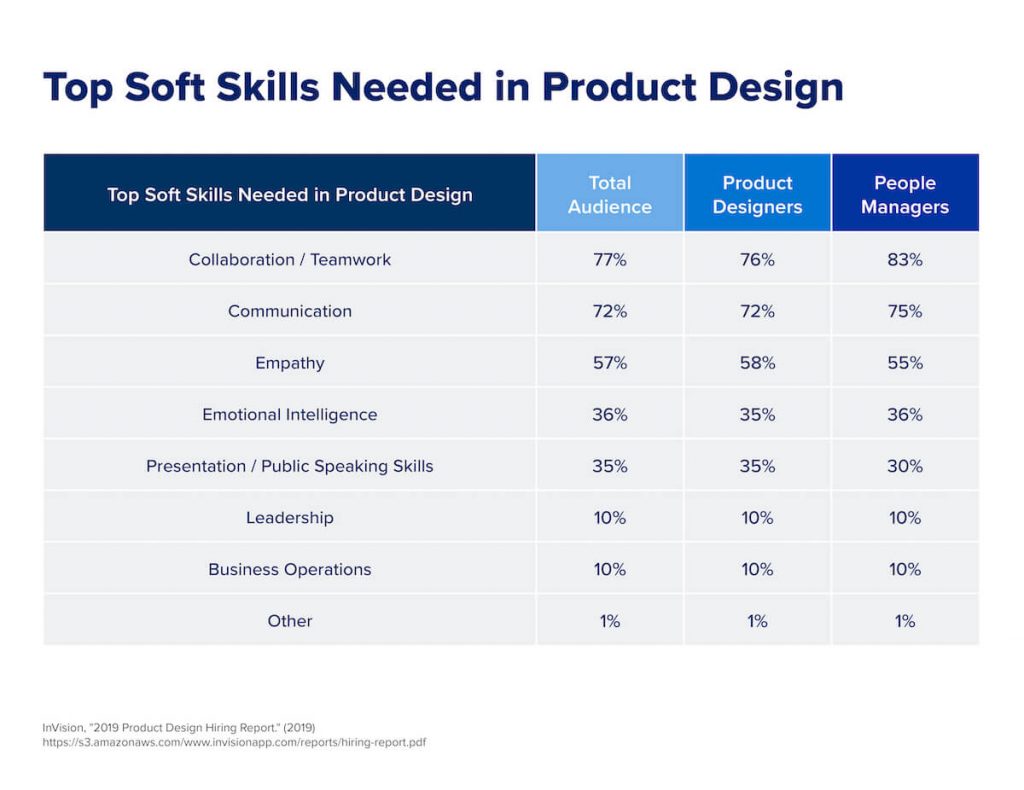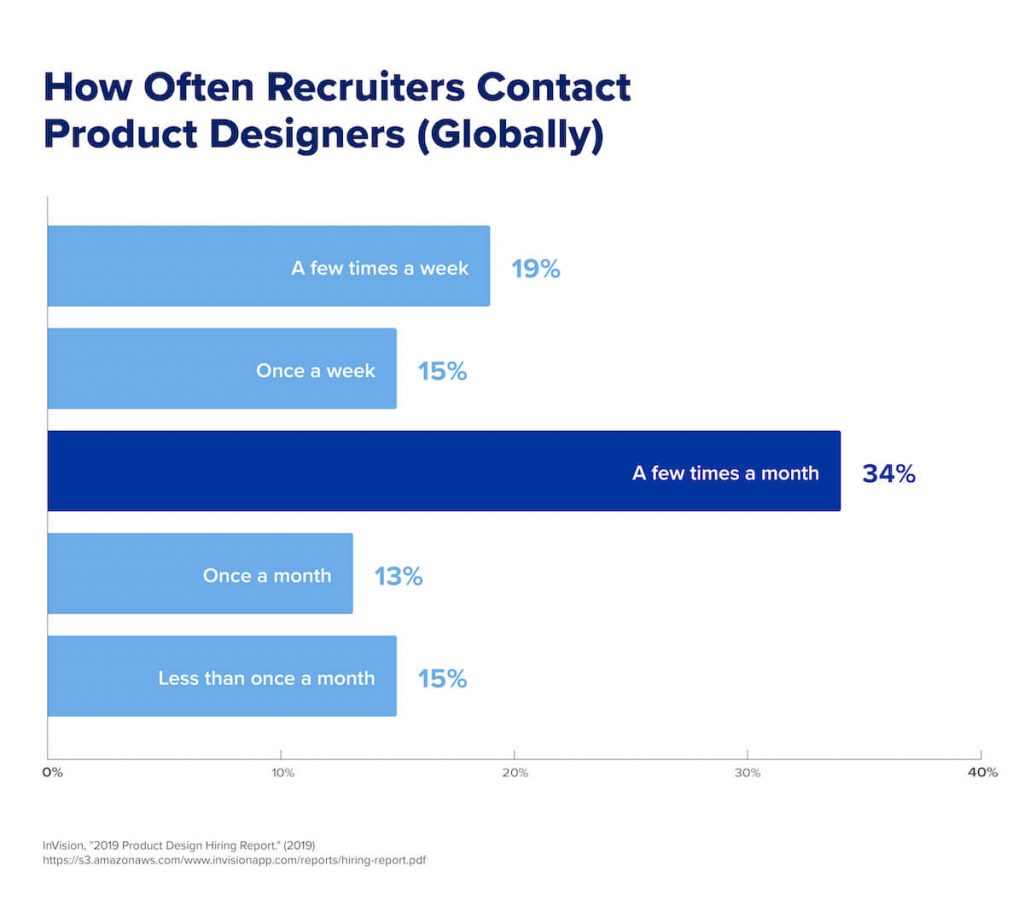User experience (UX) design is ever-present in the way we interact with everyday things. In recent years, UX and user interface (UI) designers have enjoyed an upswing in relevance for their ability to optimize the usability of websites, apps, and other digital products. Notably, even outside of dedicated UX or UI positions, many tech sector jobs make use of the underpinning principles that guide these fields.
Anyone can work in the UX field with time and training, but the best candidates are passionate about technology and can empathize with their users.
Interested in learning more about how to become a UX designer? This article will detail your necessary steps, possible career paths, and outlook for job growth and salaries.
Become a UX Designer in 6 Steps
There is no single path to becoming a UX designer. However, given the emerging and ever-changing nature of this field, you’ll need a grounding in the principles of UX and best practices of the job market.
1. Gain a Baseline Understanding of What UX Is
If you’re wondering “Is UX for me?”, you may want to take some time to research the profession to see if your interests align with its core responsibilities.
Broadly speaking, UX is about building better interactions between a user and a product or service. This generally applies to websites and apps but can extend to physical tools, spaces, or experiences. As a UX designer, you’ll have to consider who your audience is, what they want, and how they’ll interact with a given product or service.
UX jobs require you to use various software tools like Photoshop, Sketch, and Illustrator to create mockups and wireframes of your designs. You’ll be expected to improve your work through user feedback and market research.
2. Obtain an Education
Everyone who wants to get into UX or UI needs to have some educational background. You’ll most likely end up in one of three primary academic routes: bootcamp learning, master’s programs, or self-directed learning. As we’ll discuss below, each path comes with its own set of pros and cons — so think carefully before you decide on an academic option!
Master’s Programs
Higher education, particularly master’s programs, offer a conventional avenue into the UX industry. Such programs often provide a several-year-long dive into UX; a degree from a respected school can open doors during the job search. Learning through a college or university also affords invaluable opportunities for networking or mentorship.
All this said, UX is a relatively new field, and many universities are still in the foundational stages of building their UX and UI programs. Such programs aren’t widespread enough to be deemed necessary — and some learners might not want to invest the time and resources a master’s degree would require.
Self-Directed Learning
In the Information Age, those who are willing to take the initiative to learn UX independently have plenty of free and paid resources with which to do so. If you have the motivation and self-accountability necessary to teach yourself UX and UI principles, self-study may be a viable way to pick up essential industry skills.
That said, self-directed learning lacks the support systems that formal university programs and bootcamps provide. This path also does not provide learners with outright networking opportunities or any practical, hands-on experience. However, coupling self-directed learning with a mentorship or internship program can compensate for some of the shortcomings involved in taking this approach.
Bootcamp Learning
For professionals willing to put in hard work and looking to gain a practical foundation in the field quickly, a UX design bootcamp is perhaps the best academic option.
Most of these intensive academic courses are flexible, with a 12–24 week timeframe and online class options. Like traditional learning, bootcamps provide access to experienced instructors and an interactive, collaborative classroom setting — but do so at a fraction of typical university costs.
Bootcamps focus on giving candidates the foundational skills they need to succeed in UX. Most of these courses also equip learners with a capstone portfolio project that will allow them to demonstrate their practical skills to employers after boot camp completion.
3. Gain Some Professional Experience
Landing that first job after gaining an education can be challenging. However, there are multiple ways to achieve the practical experience you need to qualify for a formal position. Hiring managers will want to know that you have the prowess to solve UX problems, and an internship or volunteer role can be a great way to prove your clout.
Some relevant jobs or internships may not have “UX” in the title. For instance, a product designer uses the same principles and processes as a UX designer, only under a different name. If you’re already employed — and especially if you work in the technology industry — look for ways to put your UX skills to work in your current job!
Seeking out freelance or volunteer work can also serve as valuable experience for your first UX job. Though it may be difficult to justify the lack of compensation when accepting a volunteer position, numerous small companies and nonprofits welcome a UX designer’s assistance. Such work can give you an opportunity to work on real, entry-level projects, obtain new references, and build out your professional portfolio.
4. Build Your UX Portfolio
The earlier you start to build your portfolio, the better. You can prime yourself by taking thorough notes, saving your design iterations, and finding ways to demonstrate your skills through your collected portfolio pieces.
Your portfolio should be updated to include your most recent and successful projects and contain case studies of projects such as brand building, interface design, and information architecture. Think about the form of your portfolio, too! It should be an example of good UX design — consider how hiring managers and the like will interact with it and make it as easy and intuitive to use as possible.
Additional Resources:
- 5 Steps to Creating a UX-Design Portfolio — Nielsen Norman Group
- Portfolio tips from UX designers — Van Schneider
- Inspiring Examples of UX Design Portfolios — Adobe
5. Expand Your Professional Network
As with any industry, networking in the UX/UI space is crucial if you want to build connections and advance your career.
Not sure where to start? Consider your professional and academic contacts! Your instructors or Career Director may be able to put you in touch with career opportunities. Don’t overlook your personal network, either; if you’re pivoting from a related industry, you may be able to find individuals who made the same transition as you.
Aspiring UX professionals should also maintain a healthy online presence and, at the very least, have a robust virtual portfolio that demonstrates their skills. Attending industry events can also provide additional opportunities to meet other professionals while learning more about the latest trends in UX.
When networking, keep in mind that every relationship you build is a two-way street. Don’t be afraid to ask for help, but demonstrate value in the skills and connections you bring to the table, too!
Additional Resources:
- How to Develop Your UX Network — InVision
- Networking for Designers — UX Collective
- 30 Brilliant Networking Conversation Starters — The Muse
6. Apply for UX Jobs
Though there are a few firms dedicated solely to UX jobs, more and more companies are now creating and hiring for UX positions to support their in-house web development and product design teams. As may be expected, tech hubs like New York City and San Francisco are hotbeds for new UX jobs. However, the flexibility of the work often allows for designers to work remotely.
When talking with a potential employer, don’t sell yourself short! Apply to the jobs you can, even if they may seem a little above your skill level. Interviewing with several companies can give you a good sense of industry expectations and standards. It’s also worth setting goals for yourself regarding salary, location, and/or lifestyle needs. If you go into an interview knowing what you want, you can ask the right questions and ultimately find a job that is the right fit for you.
UX/UI Design & Research Career Paths
While specific job requirements will vary between employers and positions, every aspiring UX professional should have a strong foundation of basic skills. Not sure where to start? Check out the UX skills list below!
Necessary UX/UI Skills
Qualitative/Quantitative Data Research
All UX jobs will require you to apply insights about audience behavior and opinion. Quantitative data analysis professionals rely on Google Analytics and user surveys to gain insights into common usage patterns for software and other systems.
However, without the inclusion of qualitative data, it can be challenging to pin down why users behave a certain way. Soliciting detailed user feedback in an unbiased manner is critical to understanding users’ experiences and pinpointing an interface’s shortcomings.
Persona Creation
UX/UI designers regularly create fictional users (“personas”). Personas are research-driven and influenced by common motivations, demographics, and interests of a brand’s target audience. UX researchers or designers might even create several personas to tailor their designs to several prospective user types.
HTML/CSS
HTML and CSS knowledge allows UX/UI designers to test their web designs in code. Though not every UX professional will work directly on web development, a good understanding of these languages and others, such as JavaScript, can improve communication with the teams that execute such projects. In fact, coding experience is an increasingly expected qualification for UX design roles (PDF, 658 KB).
Decision Mapping
Located at the intersection of UX and business strategy, decision mapping refers to the process by which UX professionals determine the “why” of their research. When working in decision mapping, you might clarify whether building a particular product is worth the time or decide if modifying an existing product would be possible without adverse repercussions.
Soft Skills
It would be a mistake to focus solely on obtaining technical skills. According to research from InVision (PDF, 658 KB), 100 percent of surveyed design team managers believe that the best way for product designers to set themselves apart is to have a diverse skill set that encompasses hard and soft skills. Some of the soft skills aspiring UX or UI professionals should consider developing include collaboration, communication, empathy, emotional intelligence, and public speaking.

Additional Resources:
- 4 Collaboration Skills That Bring Teams Together — Slack
- 7 Tips for Improving Communication Skills — Indeed Career Guide
- Empathy in UX Design: What It Is and Why It’s Important — UX Planet
Career Paths for UX/UI
“How long does it take to become a UX designer?”
It’s a fair question — but unfortunately, there isn’t an easy, one-size-fits-all answer. Your career journey will vary according to your educational path. Someone who enrolls in a UX master’s program can expect to upskill in about two years. A bootcamper, in contrast, would be done with their education in under six months. Independent learning schedules are a bit more flexible, as the learner sets the pace, and can take up to a year or more to complete.
Once you figure out how to become a UX designer, though, your career options are endless. Below, we’ve listed a few potential roles for you to consider once you complete your education.
UX/UI Designer
In this common entry-level position, designers work to leverage their research skills and UX fundamentals to turn mockups and wireframes into full-fledged products. They often work with multiple teams in an organization to do so. Designers may also speak directly with clients to gauge their needs and design products to their specifications.
Product Manager
The field of product management takes many cues from UX but is often more holistic in its approach than a digital design job. A project manager manages the logistics of developing a product or service and coordinates with all professionals working on it. Product managers concern themselves with product usability and the processes that their teams use to succeed.
UX Team Lead/Manager
After gaining experience in the industry, you may step into a senior-level position overseeing other UX professionals. In a management position, you are poised to take responsibility for various products and provide feedback to team members. You may also be a voice of change in your organization, guiding business practices and strategy in accordance with UX best practices.
UI Design vs. UX Research: What’s the Difference?
Though interrelated, UI and UX are two distinct roles that each have a unique purpose within an organization.
UI Design
User interface design refers to the process of applying user feedback to improve a product or service’s interface. While UI jobs may include a research component, much of the work is performed “in the trenches” — using data to make decisions and executing updates accordingly. Skilled graphic designers or creatives who have a knack for problem solving may feel right at home in a UI role.
UX Research
User experience research is focused on the conceptual — how are people interacting with a product or service, and how can it be improved? As previously mentioned, good UX requires the collection of qualitative and quantitative data as well as A/B testing. UX research is an excellent career for an analytic professional interested in leveraging data into actionable insights.
UX Design Salaries & Job Outlook in New York & the U.S.
As with many other technology careers, jobs in UX design have enjoyed notable growth in recent years. According to research from the Bureau of Labor Statistics (BLS), the job market for web developers and digital designers is expected to increase by a whopping 8 percent between 2019 and 2029 as UX gains increasing traction as a valued profession.
In New York, the rapid proliferation of digital roles has led to plenty of lucrative opportunities for an aspiring UX designer. The BLS lists New York as the third-highest employment level for a web developer or digital interface designer, with a mean wage of $82,910. For the same role, CareerOneStop lists the median salary for New York as $73,620. However, it is important to note that salary can be impacted by a number of factors including the company’s size, as well as the candidate’s experience, educational background, and knowledge of in-demand skills.
According to InVision’s 2019 Hiring Report (PDF, 659 KB), the vast majority (81 percent) of product (UX) designers are contacted by recruiters at least once per month.

Notably, the COVID-19 pandemic has caused many organizations to reevaluate the way they handle employment. Given the flexibility of UX work, more and more remote positions are becoming viable for professionals outside of the country’s major tech hubs. This expansion will allow you to broaden your search when pursuing a UX career.
Is UX Design for You?
A career in UX means entering a creative industry with staying power and growth opportunities for the future. There’s never been a better time to break into UX — the industry’s growing job market and accessibility make it attractive for new professionals and career pivoters alike.
Want to know how to gain the foundational skills needed to become a UX designer quickly? Columbia Engineering’s UX/UI Boot Camp can give you the tools necessary to start on the path to launching your career in UX. As a learner, you’ll have the flexibility to study part-time while gaining access to industry experts and apply your new skills to create a portfolio to impress future employers. It’s not an opportunity to pass up — if you’re interested in learning how to become a UX designer, contact us today!

 Live Chat
Live Chat